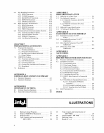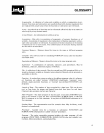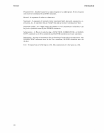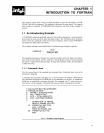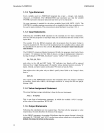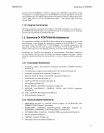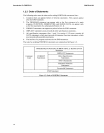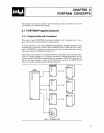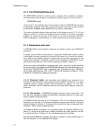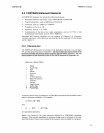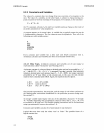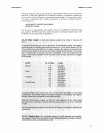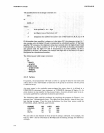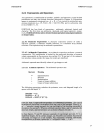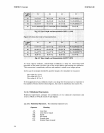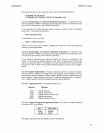
FORTRAN
Concepts
2-2
2.1.2 The PROG RAM Statement
The
PROGRAM
statement
is
used
to
name a program. This statement
is
optional,
but
when present must be the first statement
of
a main program.
It
has the
format
PROGRAM name
where
'name'
is
the symbolic name
of
the program. Only one
PROGRAM
statement
is
allowed per program.
The
main program can contain any other statement except
FUNCTION,
SUBROUTINE,
BLOCK
DATA,
SAVE,
or
RETURN.
The scope
of
symbolic names
is
discussed later in this chapter (section 2.5.5).
For
the
moment, suffice it
to
say
that
the program name
is
'global'
to the entire executable
program.
It
cannot
be the same as the name
of
an
external procedure, BLOCK
DATA
subprogram,
common
block,
or
'local' symbol name in the main program.
2.1.3 Statements and Lines
A FORTRAN-SO source program
is
made up
of
compiler controls
and
FORTRAN
statements.
Compiler controls direct the operation
of
a particular
FORTRAN
compiler, telling
it
what
kind
of
output
to
produce, the form
of
list
output,
etc. Controls are discuss-
ed in detail in the compiler
operator's
manual,
and
a few will be mentioned in this
manual where relevant. In general, controls can be embedded in
FORTRAN
source
code
and
are identified by a
'$'
in the first character position
('column'
1).
All
but
two types
of
FORTRAN
statement begin with a keyword
and
are identified
by
that
keyword.
For
example, the
PROGRAM
statement
just
described begins with
the keyword
'PROGRAM.'
Only 'assignment'
and
'statement
function' statements
do
not
begin with keywords. The
'AVG
=
HITS/AB'
statement in Figure
1-1
is
an
example
of
an arithmetic assignment statement.
2.1.3.1 Statement Labels. Any statement can be labeled; any statement to be
referenced from elsewhere in the
program
must be labeled. The label
is
a
1-5
digit,
unsigned, nonzero, integer
constant
written anywhere in columns
1-5
of
a state-
ment's
initial line. No two statements may have the same label within the same pro-
gram
unit.
2.1.3.2 Line
Format.
A
FORTRAN
statement consists
of
one
or
more lines. The
first line
of
a statement
is
called the initial line; subsequent lines in the same state-
ment are called
continuation lines.
A
FORTRAN
line
can
have up to 72 characters. The first six character positions
(referred to as
'columns'
1-6) contain
information
characterizing the line.
The
actual
statement begins in column 7. A statement can extend over nine continuation lines
(columns 7-72) for a total
of
660 characters.
An
integer anywhere in columns
1-5
is
a statement label.
If
column 6
is
blank
or
con-
tains a
'0,'
the line
is
an
initial line;
if
column 6 contains any
other
character, the line
is
a continuation line. Columns
1-5
of
a continuation line must be blank.
Specific Intel
FORTRAN
compilers may allow exceptions to the
standard
line for-
mat.
See Section
F.2.4
of
Appendix F for details.
FORTRAN-SO



